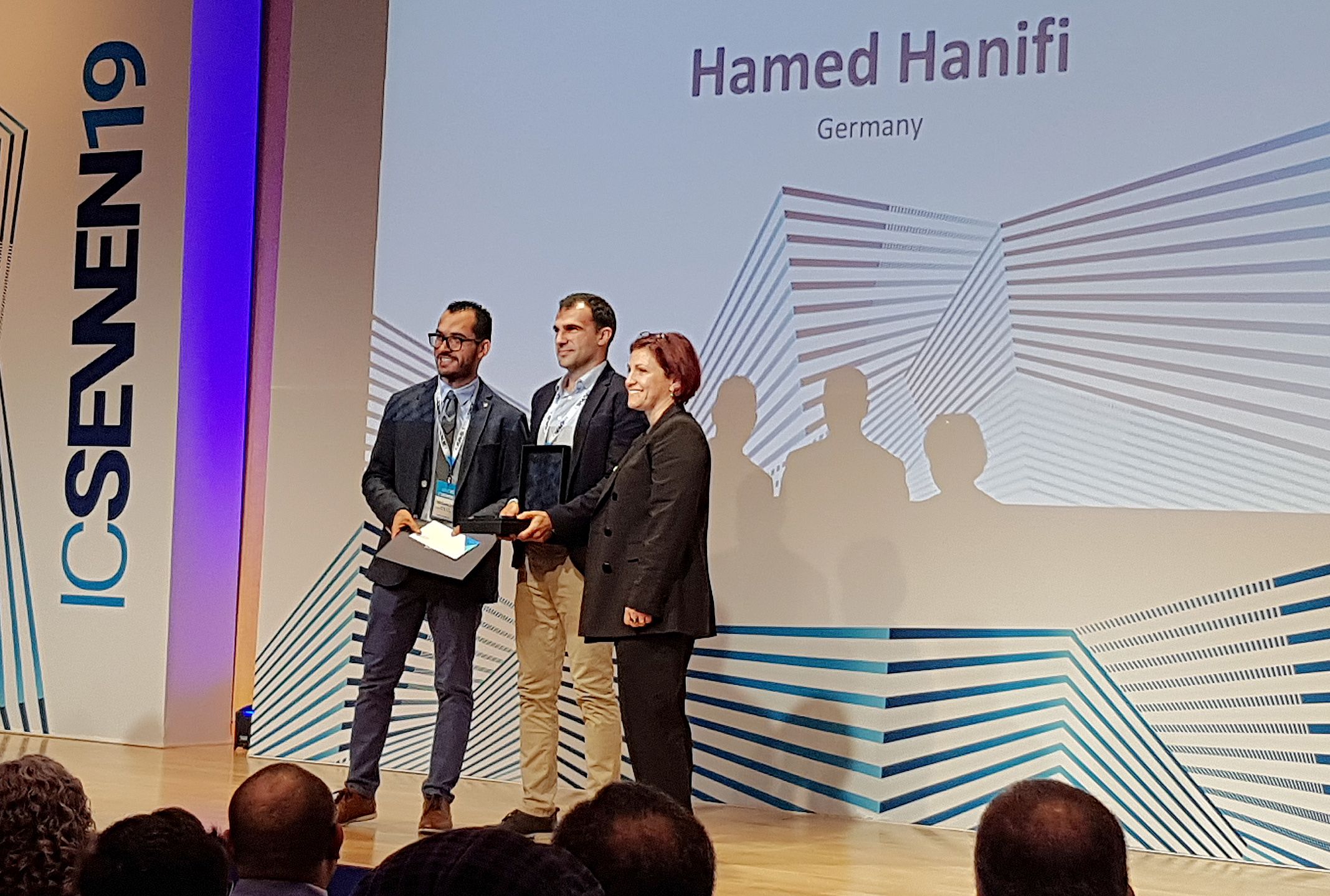At the International Conference on Sustainable Energy-Water-Environment (IC-SWEN 19) held in Qatar Hamed Hanifi from the Fraunhofer Center for Silicon Photovoltaics CSP received the “Best Student Oral Presentation” in the field of energy. His talk explained how solar modules should be connected and in-stalled in desert regions so as to reduce yield losses through soiling.

In several respects, the equatorial sun belt is the ideal place to use photovoltaic technologies to generate electricity: there is a lot of sunshine and there is ample space in the uninhabited desert regions to build large-scale solar plants. This is reflected in the current pace of construction in such regions. However, the yields of solar plants located in desert regions fall if sand or dust accumulates on the solar modules, thus reducing the amount of light reaching the solar cells.
The Fraunhofer CSP in Halle (Saale) dedicates its attention in many ways to this problem of soiling. In his talk “Optimum PV Module interconnection layout and mounting orientation to reduce inhomogeneous soiling losses in desert environment” at the international symposium, Hamed Hanifi showed that both adjusting the interconnection of cells can help reduce these soiling effects as can the adoption of a special procedure to install photovoltaic modules in desert regions.
In his talk, Hamed Hanifi primarily addressed the problem of inhomogeneous soiling. This occurs when different areas of a solar module are soiled with differing intensities. In particular, the accumulation of a lot of sand on the underside of a module can notably reduce the module’s performance. Partial shadowing occurs and at the same time the temperature inside the module rises significantly. This can lead to the complete failure of the module. In order to avoid this, appropriate measures include adjustments in the size of cells, in the electrical interconnections and in the orientation of the module during assembly.
In his study Hanifi examined the effects of soiling in the corners and along the edges of a module for three different types of module configuration. Full- and half-cell modules as well as different interconnections were used and the modules in question were each installed in two different directions. The specific features of the territory were also taken into consideration. The results from a simulation were verified by means of appropriate measurements. It turned out that the right selection of cell size, appropriate interconnection and suitable orientation during installation can all affect a module’s power yield by up to 65% in comparison to the standard modules available in the market. “This enhances the efficiency of desert modules and also means more planning security for solar plant operators. They can now calculate which countermeasures to combat inhomogeneous soiling are possible and worth taking”, says Hanifi commenting on his results.